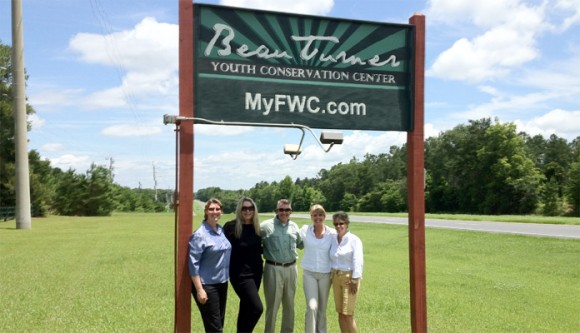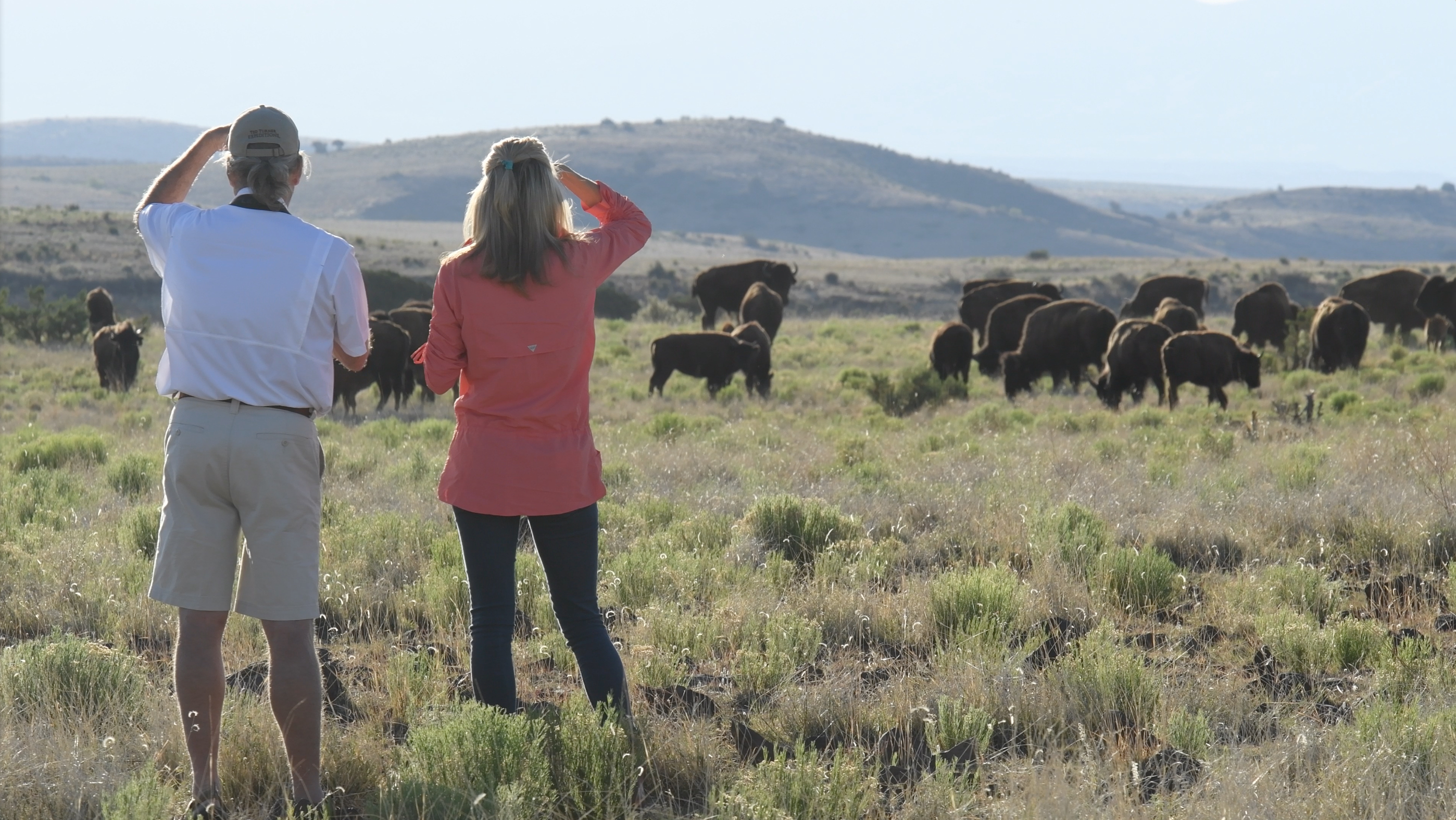I’d like to share with you part of an exclusive excerpt given to The Land Report from Todd Wilkinson’s new book on my father, Last Stand, Ted Turner’s Quest to Save a Troubled Planet. This is such a great book!
When Ted Turner reached the half-century mark in 1988, he owned CNN and TBS, professional baseball and basketball teams, the MGM film library, a handful of properties in the Southeast, and an island. Nevertheless, he felt hemmed in. In his travels between Atlanta and Los Angeles, the inner West was regarded as a “fly-over” region. That perspective changed in 1987. He bought his first ranch, the Bar None, at Toston, near the birthplace of the Missouri River in Montana. At the recommendation of his son Beau, he had started fly-fishing as a way to relax. With a stream running through it, Bar None gave him a great stretch of casting water.
Turner’s arrival in Montana coincided with a cultural shift occurring in Big Sky Country. Robert Redford was about to make his movie adaptation of Norman Maclean’s novella A River Runs Through It, transforming fly-fishing into a national sensation. The film also accelerated a phenomenon that was quietly under way: the changeover of historic working cattle ranches into recreational investment holdings for millionaires and billionaires.
The Bar None whetted Turner’s appetite for more land in Montana. He had heard stories of the Flying D from Rob Arnaud, who was working for him as a caretaker at the Bar None. A fourth-generation Montanan, Arnaud was also an outfitter conducting commercial hunts on the public land next to the Flying D, and was familiar with its size and beauty.
A handsome, broad-shouldered spread, the Flying D rivals the King Ranch of Texas in mystique. It covers 170 square miles and straddles two counties, girded on one side by the Gallatin River and on the other by the Madison River, both famous blue-ribbon trout meccas. Despite being stocked heavily with cattle and conducting an intensive agricultural operation, the ranch was rumored to have sketchy profit margins. Turner asked the real estate brokers who had found him the Bar None, Joel Leadbetter and Jim Taylor of Hall and Hall, to determine if the Flying D might be available for purchase.
The owners, the Shelton family of Texas, granted a one-person exclusive listing for Leadbetter and Taylor to show Turner the ranch, even though it was “not for sale.” However, they indicated a price for the ranch plus all cattle and machinery, a sum that seemed outrageous: $22 million. Perhaps they never believed another rancher able to afford it would come forward. They were both right, and much to their dismay, wrong.
Turner was not another would-be rancher. Upon getting the opportunity, he drove through the “D” once and was smitten. He told Leadbetter, Taylor, and his attorney to do “whatever it took” to close the deal. There would be no dithering around. He correctly ascertained that the Flying D represented a once-in-a-lifetime opportunity.
After intense negotiations over contract details, not the least of which was the value of the cattle and machinery, and overcoming seller’s remorse that constantly threatened to torpedo the purchase, the deal was closed. Turner paid $21 million cash and acquired all 107,000 acres, plus the cattle and machinery. The acquisition made headlines across the West and caused a ruckus. People in Montana only knew Turner for his “Captain Outrageous” reputation in the media. A pervasive fear, for some, was that he would turn the ranch into a massive real estate play, dividing it up and selling the pieces.
His first major decision was to retain the ranch manager, Bud Griffith. Griffith had worked on the Flying D for the Sheltons and, before them, the California-based Irvine Company. “I loved the property and just felt, ‘Well, I’ll go work for Ted Turner and work for the brand as I always have, no matter who the owner is,’” Griffith said. But Griffith was stunned when Turner issued an edict that bison would replace the D’s thousands of cattle, a move that would make the “the brand” obsolete. Turner said he would never sear a firebrand into the sides of his bison.
Further changes were already planned. Under decades of intensive grazing by beef cows, the Flying D suffered from a litany of impacts. Some sections of creek bottom were mud holes. Riparian areas and uplands were denuded of vegetation. The bison would be managed in such a way as to lessen these impacts. “I had never been around bison before, and I didn’t know a lot about them,” Griffith says, chuckling at his naiveté. “I had no idea what was going to happen next. I got the impression it’s just what happens when you work for Ted Turner. He keeps things hopping.”
Turner ordered Griffith to tear down interior barbwire fences that he and other hands had spent decades erecting and maintaining. Down, too, came power poles and lines, corrals, and outbuildings. Turner put a halt to irrigated hay production on a portion of the ranch. That portion had yielded upwards of 1.5 tons of hay an acre but had pulled water out of the streams. Collectively, this was perceived by some of the traditionalists on the ranch as an order to disavow tradition, to turn their backs on their own sweat equity and the codes of the cowboy way.
Turner wanted a free-ranging bison herd within the confines of the ranch, which meant he had to build a perimeter fence to contain his bison. But first he had to locate animals to buy. An old friend of his, Maurice Strong, whom Turner had met through his establishment of the Better World Society and connections to the United Nations, happened to own a ranch in Colorado.



